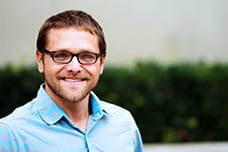 |
|
Dissertation Abstract
Youth in the US face an increasingly contentious sociopolitical landscape characterized by polarization, structural racism, and accelerating inequality. The field of youth civic engagement has risen in prominence with increasing consensus regarding the benefits of civic participation to youth and its importance in supporting a democratic society. The development of civic attitudes in adolescence is strongly predictive of adult participation and civic activities have been linked to a wide variety of positive outcomes for youth. Justice-oriented forms of engagement can empower marginalized youth and drive equitable social change. Much remains unknown about youth civic engagement, despite potential implications. In my dissertation, I address gaps in the youth civic engagement literature regarding motivation and social networks. My three studies draw from two waves of data collected from the student body of a low-income high school that predominantly serves Latinx youth.
In my first study, I advance a model of critical civic motivation grounded in expectancy-value theory, conceptualizing civic motivation as expectancies (individual and collective) and values (interest and attainment). Civic expectancies and values differentially predicted behavioral outcomes of service, activism, and COVID-19 social distancing, with expectancies and values interactively predicting activism. Next, I used person-centered analyses to highlight diverse manifestations of civic motivation among marginalized adolescents. Across five clusters, one-third of the participants exhibited discrepancies between expectancies and values. The findings illustrate the utility of a holistic, critical framework that integrates established literatures on political efficacy and interest.
In my second study, I examine the relationship between features of adolescent social networks and civic engagement. The results indicated that students were likely to be friends with others who had a similar frequency of participation in civic activities (“homophily”). Some forms of civic engagement (e.g., volunteering) were related to popularity (“centrality”), whereas others (e.g., activism) were not. Consistent with studies of adult social movements, civic engagement of adolescents was related to the effective size of each individual adolescent’s social network (which accounts for the presence of “weak ties” and “structural holes”). The study makes novel contributions to youth civic engagement literature by integrating perspectives from social network scholars.
In my final study, I use longitudinal social network analysis to disentangle overlapping social processes that underlie youth civic development. Informed by theories of sociopolitical development and critical consciousness, the present study uses longitudinal social network analysis to examine peer socialization and friendship formation processes in relation to participation in service and activist activities. The school provided scaffolding for service, but not activism, which enabled investigation into social processes across differing support structures. Two complementary stochastic actor-based models estimated participation in service and activist activities, while simultaneously testing perceptions of inequities as potential antecedents. Results indicated that students exerted influence on their friends’ frequency of engagement in service activities and participation in service was a driver of friendship formation. Neither socialization nor friendship selection were present for activist activities, potentially attributable to differential school infrastructure. Perceptions of inequities predicted activist behavior over time, but not service. The findings suggest interventions aimed at supporting civic development and critical consciousness of youth may benefit from increased attention to peer socialization and friend selection as intertwined processes.